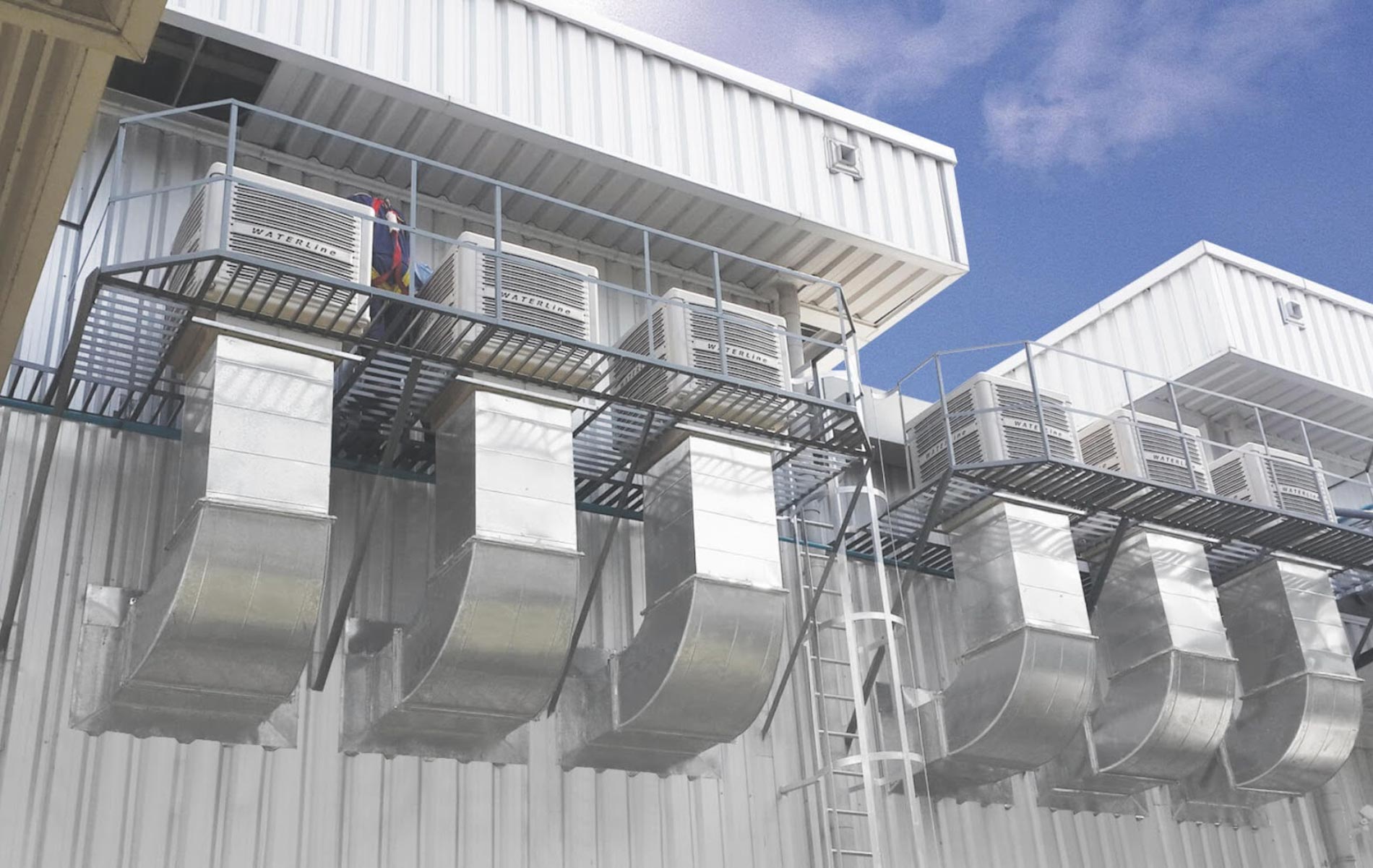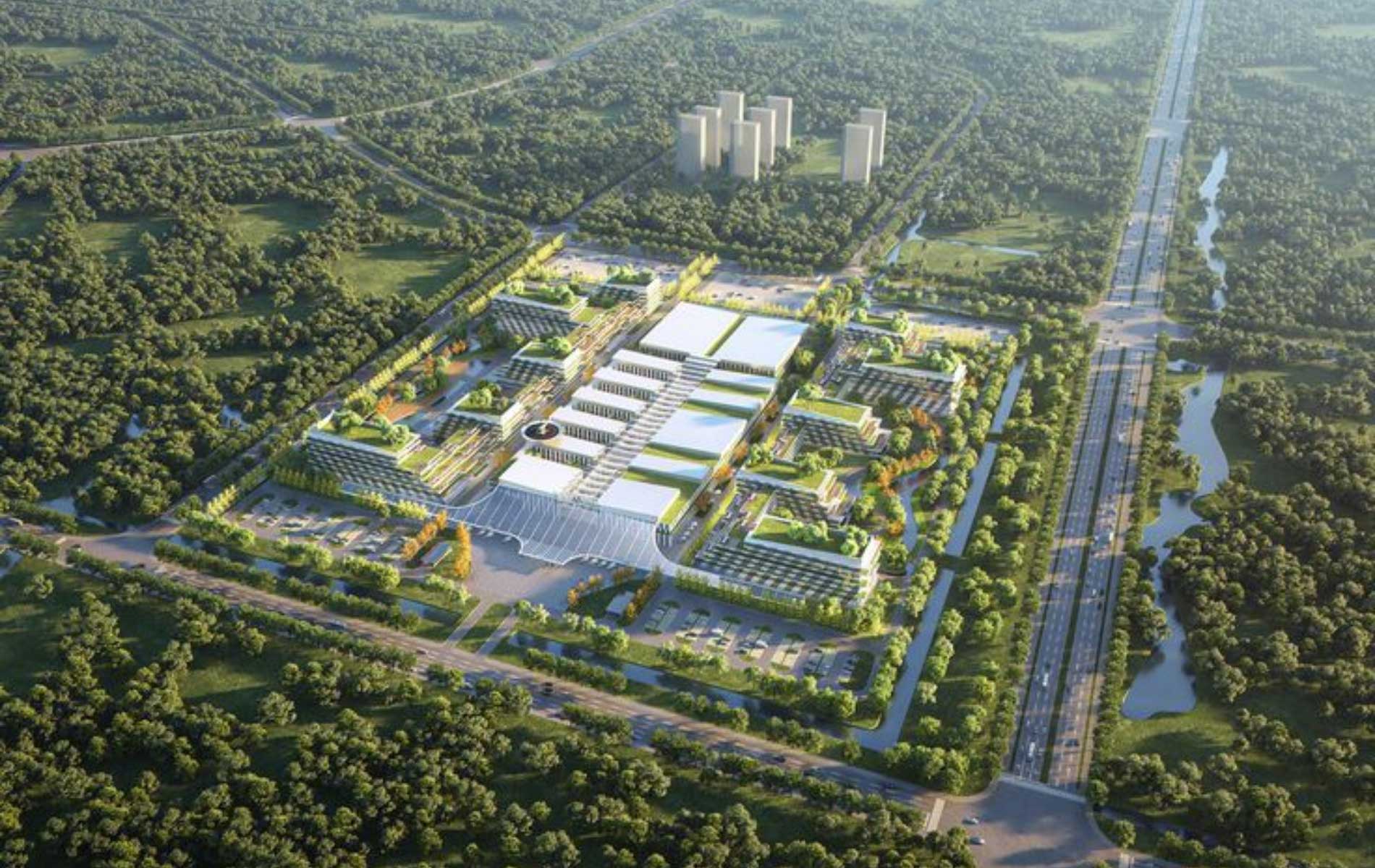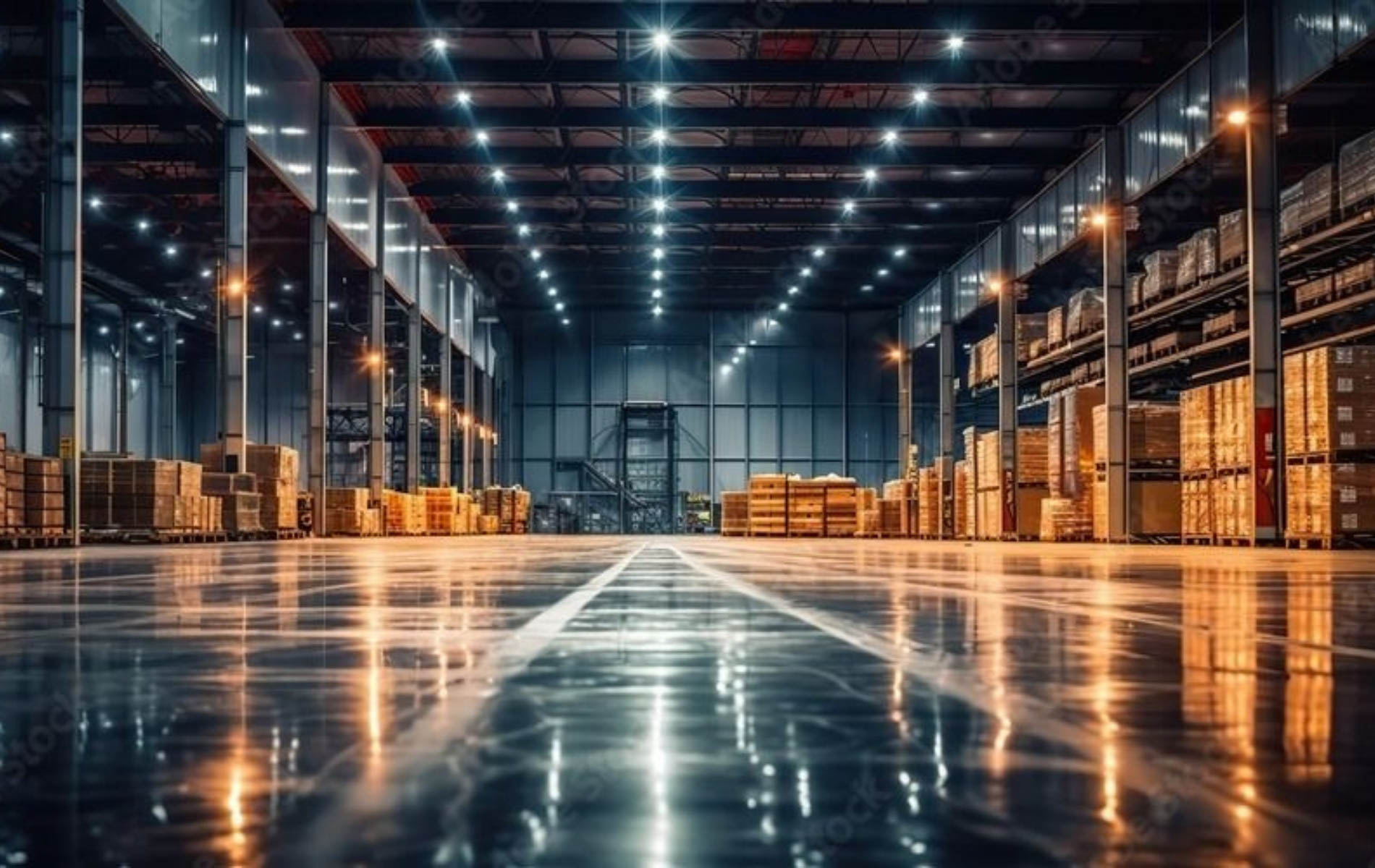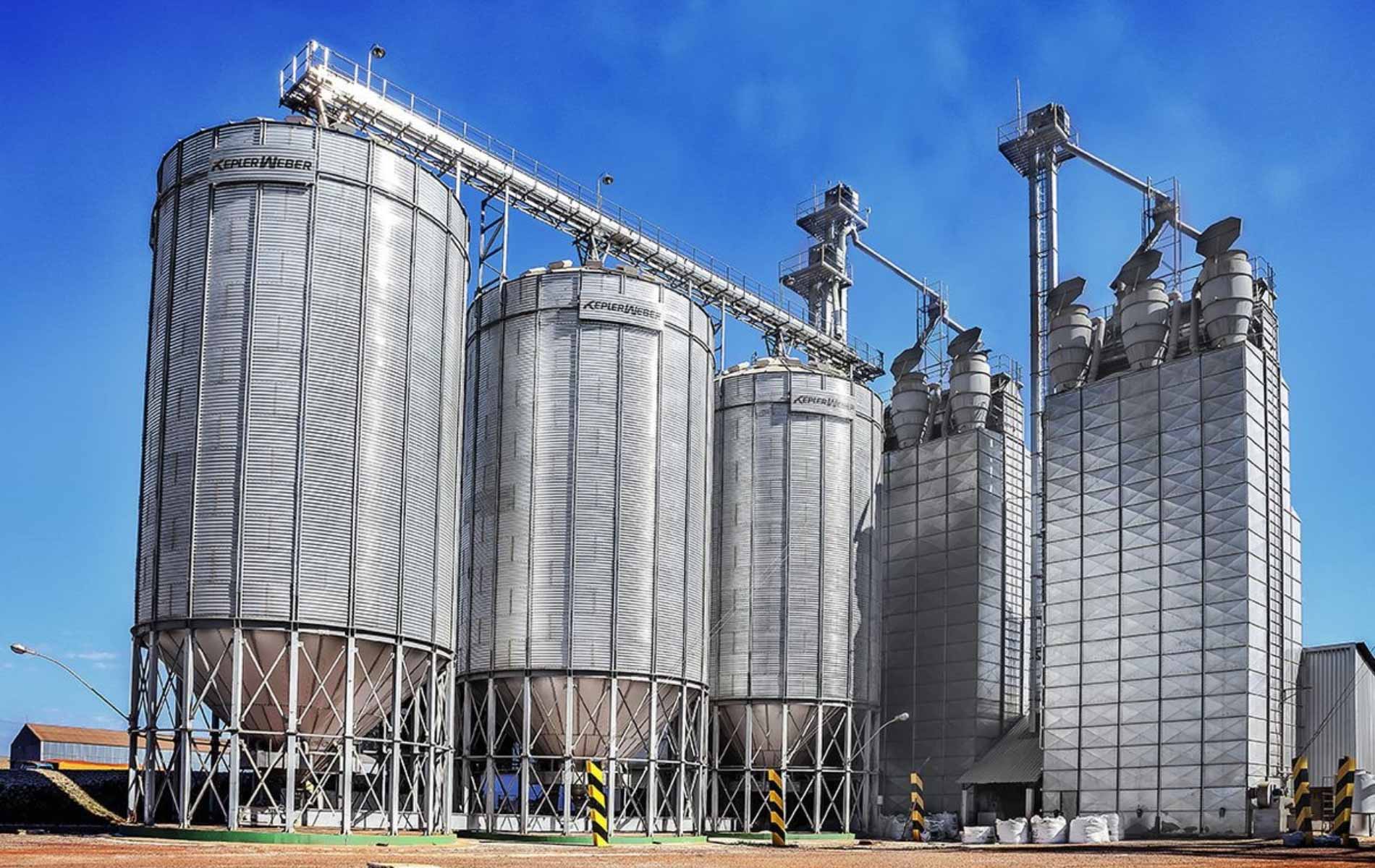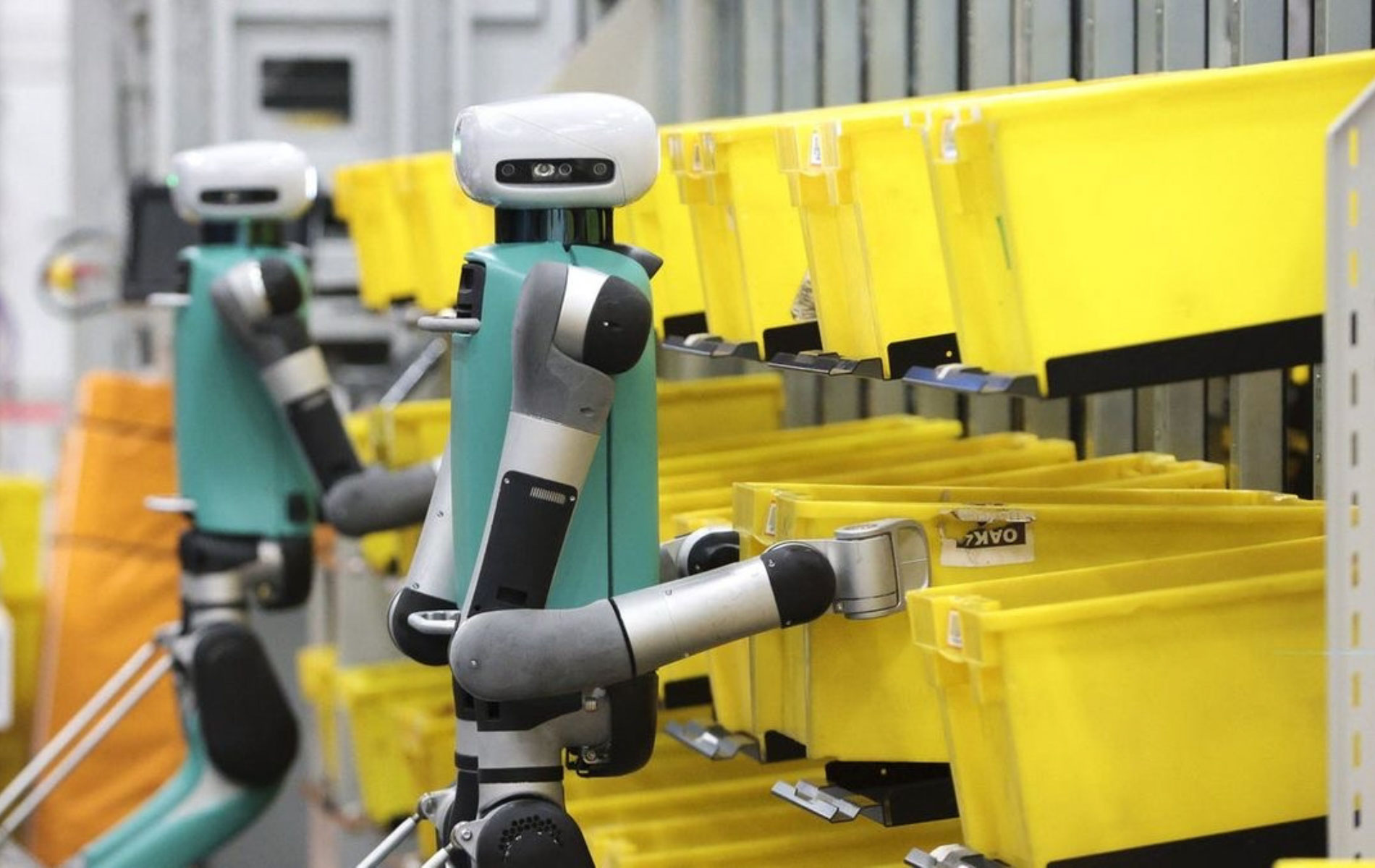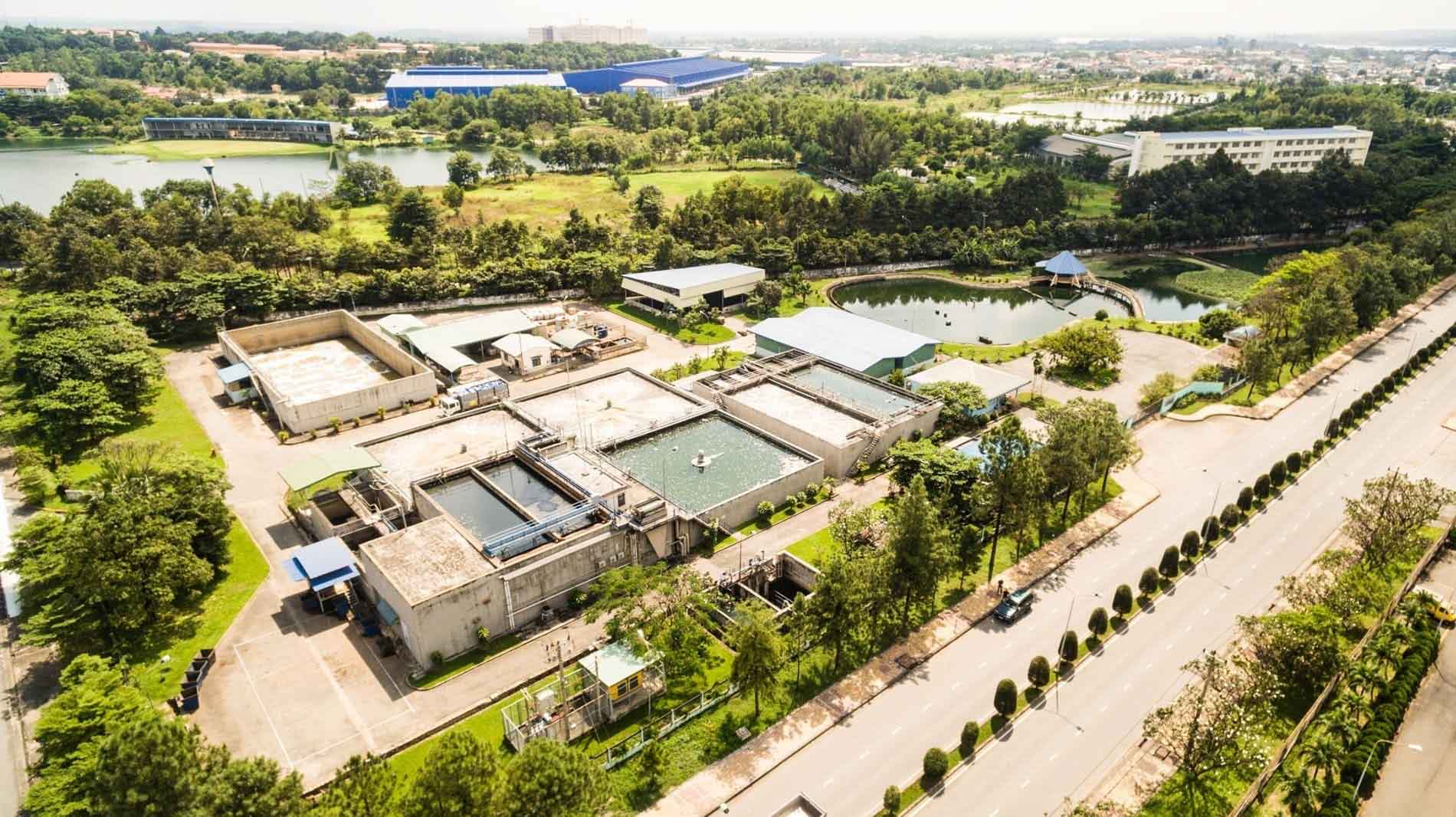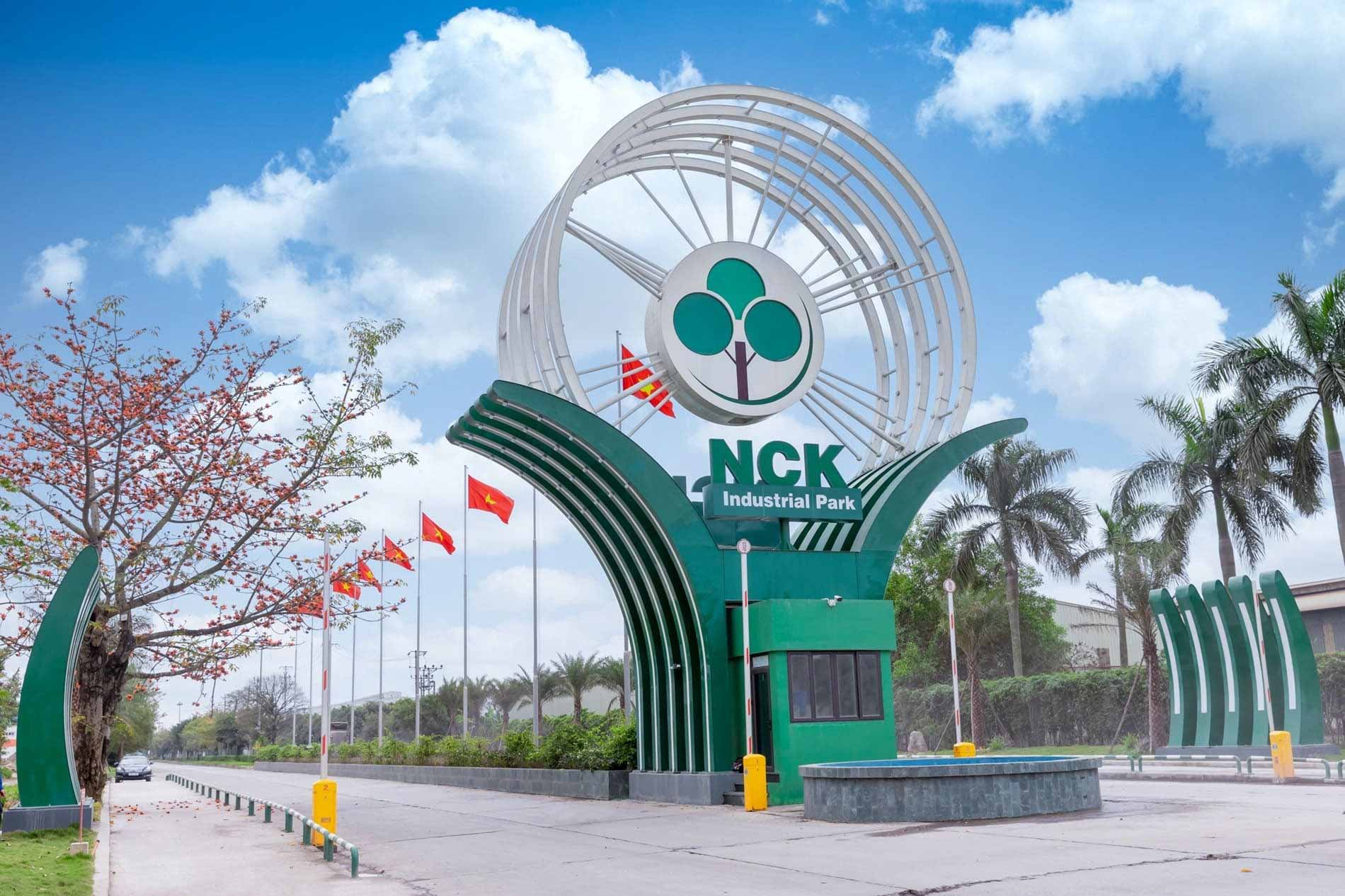In modern manufacturing environments, industrial dust is not only hazardous to human health but also detrimental to equipment performance and productivity. For this reason, today’s industrial dust collection systems play a critical role in daily operations. From Cyclone separators and bag Filters to centralized Cartridge-based systems, each operates on distinct principles and serves specific application scenarios. In this article, KTG Industrial provides in-depth information on each type of dust collection system to help businesses determine the most suitable solution for their production needs.
Advantages and disadvantages of common industrial dust collection systems
Cyclone dust collection system
The Cyclone dust collection system functions based on the principle of centrifugal force. As dust-laden air enters the Cyclone chamber tangentially, heavier particles are driven toward the chamber wall and fall into a collection hopper at the base, while the cleaned air is discharged through a central outlet pipe. This system is designed without moving parts, offering a streamlined structure that minimizes mechanical failures and simplifies maintenance.
Key advantages of the Cyclone system include:
- High efficiency in removing dry, coarse dust particles, with potential for dust material reuse
- Durable construction and stable operation in high-temperature and high-humidity environments
- Easy to maintain with low operating costs
- Consistent performance, unaffected by dust concentration in the air
However, there are several limitations to consider:
- Relatively low efficiency in filtering fine particulate matter (typically around 70–90%)
- Large physical footprint, requiring more installation space
- Potential for noise and vibration during operation, which may require additional soundproofing measures
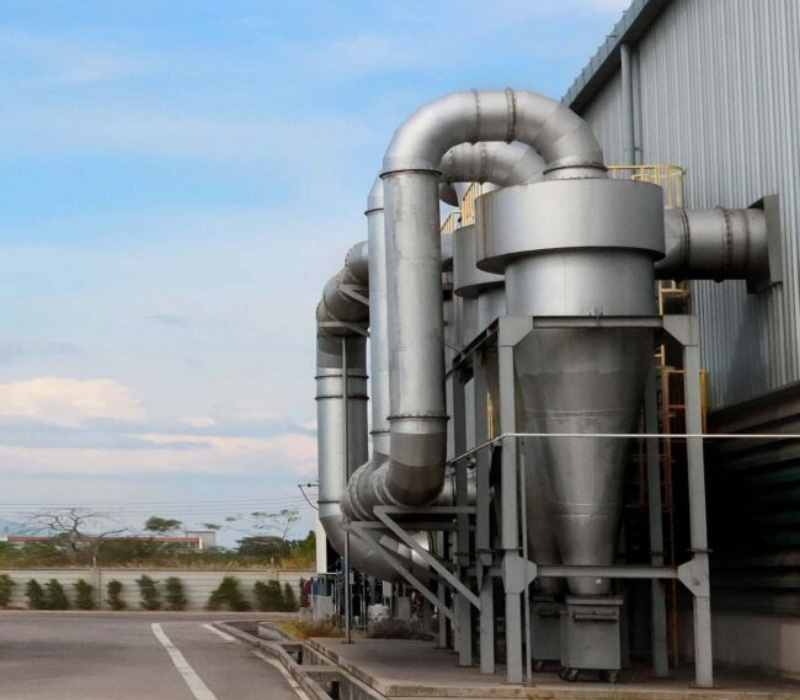
Cyclone dust collection system
Filter dust collection system
The Filter dust collection system operates on a filtration mechanism using specialized materials such as fabric bags, paper, synthetic fibers, or mesh. As dust-laden air passes through the filter media, particulate matter is captured either on the surface or within the fiber structure, while clean air is discharged outside. To maintain optimal performance, the system typically includes cleaning mechanisms such as automatic shaking, compressed air pulse cleaning, or periodic replacement of filter elements.
Thanks to this operating principle, the Filter system offers several notable advantages:
- High dust filtration efficiency, capable of effectively removing both coarse and fine particles (up to 99%)
- Quiet operation, with minimal noise and vibration
- Compact and flexible design, easily integrated into various factory layouts
- Suitable for industries that require fine dust filtration, such as pharmaceuticals, food processing, and electronics
On the other hand, there are also several limitations that should be considered:
- Filters require regular cleaning or replacement, resulting in maintenance costs and potential downtime
- Not ideal for environments with excessive heat or humidity, which can degrade filter media
- Collected dust is difficult to recycle, especially fine or hazardous particles
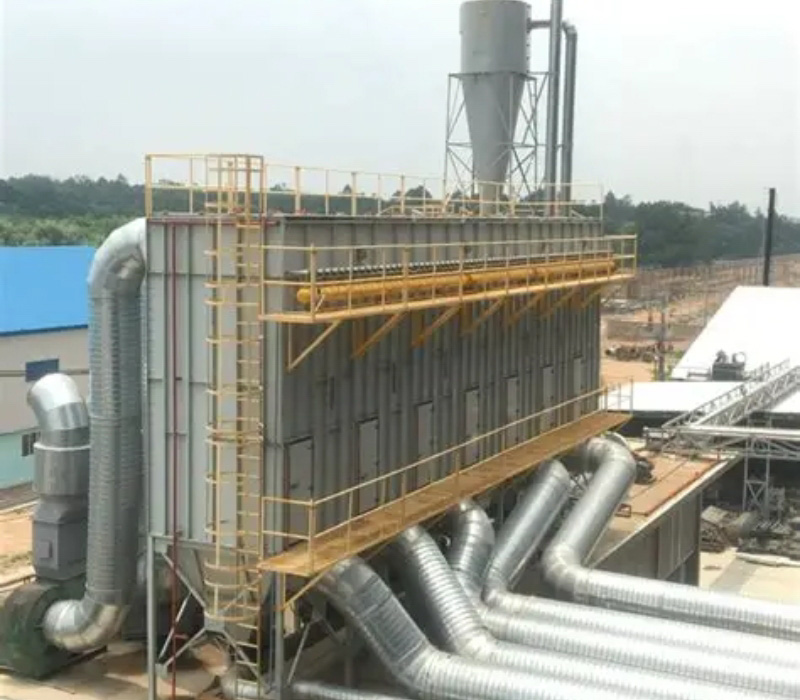
Filter dust collection system
Cartridge dust collection system
The increasing adoption of the Cartridge dust collection system in modern factories is no coincidence. Unlike traditional filtration methods, Cartridge systems operate through a dual-stage mechanism: larger dust particles are separated by centrifugal motion, while fine particles are captured by pleated filter cartridges with large surface areas and deep filtration capabilities. These filters are typically cleaned using automated compressed air pulses, helping maintain consistent performance without the need for frequent cartridge replacement.
Key advantages that make the Cartridge system a preferred choice for manufacturers include:
- Capable of capturing ultra-fine dust with efficiency up to 99.9%
- Compact design, requiring minimal installation space
- Quiet operation, ideal for enclosed or noise-sensitive environments
- Compatible with harsh production conditions such as high temperatures, humidity, and pressure
Though, this system also comes with a few limitations:
- Relatively high initial investment and maintenance costs
- Requires integration with a compressed air system for cleaning, demanding accurate operational setup and technical expertise
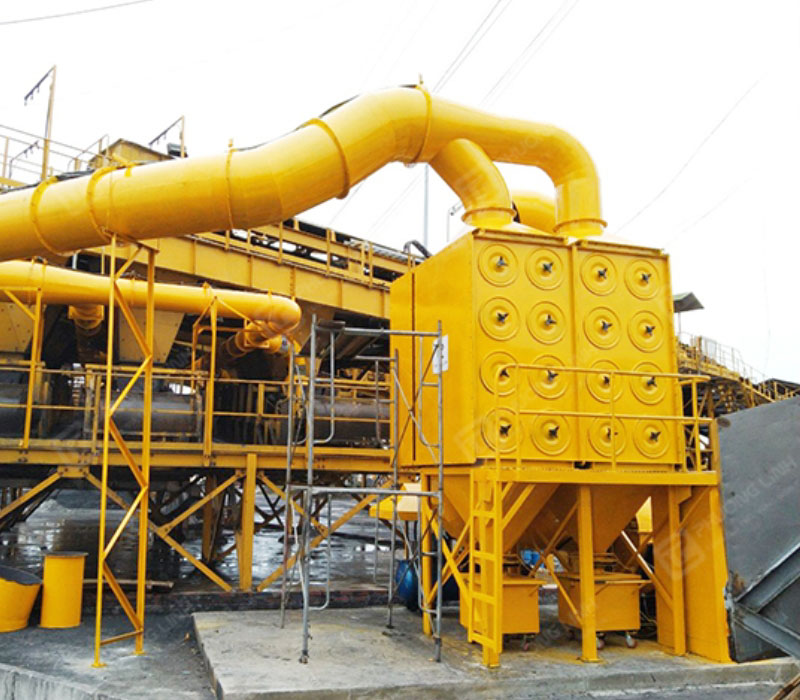
Cartridge dust collection system
Other dust collection systems
In addition to widely used solutions such as Cyclone, Filter, and Cartridge systems, several other technologies are applied depending on the type of dust and specific operational requirements of each facility.
Baghouse systems (fabric dust collectors) are a traditional option that works by drawing contaminated air through fabric filter bags. Dust particles are retained on the outer surface of the bags, which are then cleaned using a mechanical shaking or reverse-air pulse mechanism. These systems are known for their stable performance and moderate capital cost.
Electrostatic precipitators (ESPs), on the other hand, utilize electrical fields to capture ultra-fine dust particles. As dust-laden air passes through the charged field, particles become ionized and are attracted to oppositely charged plates. This system is especially effective for capturing fine dust and industrial fumes—types that are often difficult to handle with conventional mechanical methods.
Lastly, wet scrubber systems remove dust by passing air through a liquid (typically water or a specialized solution). As the air flows through the scrubbing chamber, dust particles are trapped and settle with the water. This method is well-suited for sticky, flammable, or toxic dust, offering strong pollution control and minimizing fire and explosion risks.
Key considerations when choosing a dust collection system
Selecting the right dust collection system involves far more than cost—it requires a comprehensive evaluation of both technical specifications and the operational context of the facility.
The type of dust to be handled is the most critical factor. Whether dealing with dry dust, fine particulates, sticky residues, or corrosive contaminants, each condition significantly impacts the system’s performance. For instance, wood dust or fibrous materials are often effectively managed with a Cyclone system, whereas hazardous or ultra-fine dust may necessitate Cartridge or Filter systems to ensure safety and compliance.
Dust generation volume also dictates system capacity and sizing. High-volume production lines operating around the clock will require robust, high-capacity systems capable of continuous operation to avoid overload, equipment contamination, and potential health risks for workers.
Filtration efficiency is another essential consideration—particularly in industries such as pharmaceuticals, food processing, electronics, or surface coating, where air purity standards are exceptionally stringent. In these sectors, systems must achieve filtration efficiency between 95–99.9%, effectively removing both coarse and ultra-fine dust while maintaining cleanroom-grade air quality.
At the same time, capital investment and operational cost are strategic concerns in any procurement decision. Businesses must weigh initial expenditure against long-term benefits. While modern systems may require a higher upfront investment, they often deliver superior filtration, energy savings, and reduced maintenance risks throughout the lifecycle.
Lastly, available installation space should be evaluated early in the planning process. Some systems, such as Cyclone units, require significant floor space and high ceilings to operate efficiently. In contrast, modular systems like Filter or Cartridge units offer greater flexibility for installation in compact zones or segmented areas within the plant.
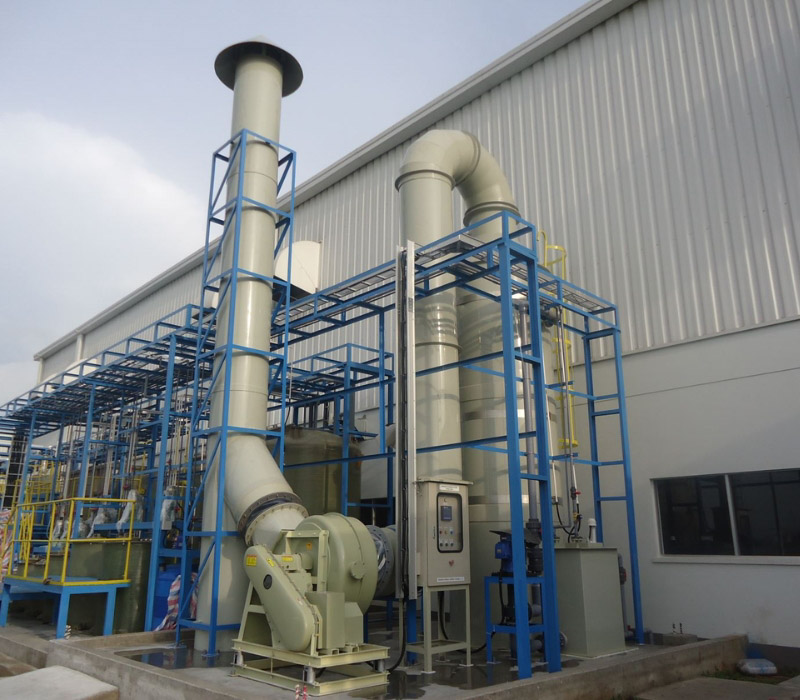
Dust collection systems: safeguarding air quality in industrial facilities
Conclusion
Choosing the right dust collection system not only improves air quality within the factory but also enhances operational efficiency and safeguards worker health. Depending on the nature of the dust, facility size, and investment budget, businesses can consider options such as Cyclone, Filter, Cartridge, or other specialized solutions. Understanding the strengths and limitations of each system is a critical step toward optimizing performance and building a safe, sustainable working environment.

